 Wouldn’t it be nice to have all the prescriptions from all the patient’s providers together in one place? What about having all of the patient’s past medical history include x-rays and MRI’s available at a click of a button? How about being able to review the referring provider’s office visit notes before seeing a new patient? Want to know if the patient has had PT? Click a button. Sound like a dream? It’s not. It is all possible today through healthcare interoperability.
Wouldn’t it be nice to have all the prescriptions from all the patient’s providers together in one place? What about having all of the patient’s past medical history include x-rays and MRI’s available at a click of a button? How about being able to review the referring provider’s office visit notes before seeing a new patient? Want to know if the patient has had PT? Click a button. Sound like a dream? It’s not. It is all possible today through healthcare interoperability.
“Think about how much time could be saved, not just for the staff but for the providers by sharing medical records. It’s about getting the right information, on the right patient, to the right provider, at the right time, every time,” stated Linda Van Horn, MBA President / CEO of iShare Medical℠ – a Fully Accredited DirectTrust Anchor Health Information Services Provider.
In the past, we relied on the patient to be their own health historian and patients don’t always remember or effectively communicate their health history. Through healthcare interoperability, we can get the medical records directly from other providers making the information more complete, reliable, and accurate.
On October 6, 2015 the ONC published the Connecting Health and Care for the Nation, A Shared Nationwide Interoperability Roadmap laying out the plan for how we will create a sharable learning health system in which providers and patients are empowered to find, get, use, and update health information when and where it is needed with the goals of saving costs and improving care and outcomes.
Interoperability is nothing new in healthcare. We’ve been interoperable with insurers for decades. As providers, we file a claim using a standard format to the insurers who process the claim and send us a remittance advice (formerly known as an EOB) and, if payment is due, the payment is normally deposited in our bank account using electronic funds transfer. That’s interoperability.
We are also interoperable with pharmacies when we send a prescription order electronically to a pharmacy following a standard format so the pharmacy can be read, understand, and fill the prescription. That’s interoperability, too.
Interoperability, at its core is about compliance to standards. Interoperability is defined by The Institute of Electrical and Electronics Engineers (IEEE) as the “Ability of a system or a product to work with other systems or products without special effort on the part of the customer. Interoperability is made possible by the implementation of standards.” Standards provide the syntax and common language for understanding.
Healthcare has been on an interoperability journey since 2004 when Executive Order 13335 created the National Coordinator for Health IT position and called for the adoption of EHR’s by 2014. In 2009, the HITECT Act furthered the cause of interoperability by adding economic incentives and disincentives for providers to adopt electronic medical records. Since then we have implemented a nationwide network of health information exchange.
Direct Messaging (or Direct Project) is a secure encrypted standard way to electronically send and receive health information over the Internet. It is used to communicate between EHR’s. But, Direct Messaging can be implemented as a standalone email service. That means that no EHR is required.
In the beginning Direct Messaging was slow to get started. At first, providers were using Direct Messaging just to meet meaningful use. Stage 1 Meaningful Use required the use of Direct Messaging. But, all too often the Direct Messaging functionality was poorly implemented by EHR vendors or buried in some remote region of the EHR. In addition, some EHR vendors blocked Direct Messaging capability by allowing only certain types of messages be allowed to be transmitted, such as C-CDA documents. Today, most of this data blocking activity has been stopped under threat of decertification of the EHR products by the ONC.
Recently the exchange of health information using the Direct Messaging has been exploding. According to DirectTrust, Direct Message exchange grew by 66% in 2015 to nearly 44 million transactions over its secure nationwide encrypted network. Further, DirectTrust forecasts that the DirectTrust network will exchange 800 million transactions annually by the end of 2017.
The DirectTrust is a non-profit nationwide network that includes 52,000 healthcare organizations, 50 Health Information exchanges, over one million Direct Addresses and supports over 300 EHR vendors. There are 40 DirectTrust Fully Accredited Health Information Services Providers (HISPs) including vendors like Cerner, Quest Diagnostics, SureScripts, Veterans Administration and iShare Medical℠. Thirteen of the DirectTrust HISPs are cross-certified with the Federal Bridge Certificate Authority, which is required to exchange data with government entities such as Veterans Administration, Indiana Health Services and Medicare and Medicaid.
All this growth in Direct Messaging illustrates that providers are using Direct Messaging because it works, it’s easy to use, and practices are getting positive return on their investment. Here are some examples of how Direct Messaging is paying off:
Save Providers Time and Improve Care Coordination
- Send and receive medical records, such as referring provider notes at the time of referral from one provider to another
- Consolidate all the prescriptions from all the providers in one view
- Send results of a consult or encounter back to the referring provider
- Obtain copies of MRI’s, EMG’s, NCV’s and other tests
- Obtain copies of laboratory results
- Get physical therapy orders certified and re-certified
- Send medical records at discharge from the hospital to another provider, such as a physician, post-acute care or long-term care facility
Communicate with Staff using Secure HIPAA-Compliant Email Messages
- Send secure email messages between staff members and between staff and providers
- Send provider schedules via email
- Send email message between providers from different healthcare organizations
Save Staff Time
- Replace the fax machine; medical records go directly to the patient’s account
- Streamline work flow
- Send medical records to health care attorneys
- Send medical records to insurers including workers compensation
Communicate with Patients using Secure HIPAA-Compliant Email Messages
- Send and receive intake forms to patients
- Send medical records including lab results to patients
- Send and receive patient surveys
- Send patient appointment reminders
- Send patient statements saving mail cost
Direct Messages look like email and act like email, but this is no email system. In Direct Messaging, both the sender and the recipient of a message must be ID-Proofed to prove that they have a HIPAA Compliant right to get access to medical records. Once ID-Proofed each party is assigned a Direct Address and a cryptographic private key. This key can be used to open messages that were sent to their Direct Address. No one else can open the message. Using their Direct Address account, the sender sends the message to the Direct Address of the recipient. The Direct Message is encrypted and sent securely to the recipient who uses their private key to open the message.
Some of the reasons Direct Messaging has taken off is that it is easy to use, inexpensive, intuitive, and provides a faster way to communicate. Plus, Direct Messaging is HIPAA Compliant where regular email service is not. Direct Messages are exchanged between known Direct Addresses whose owners have been ID-Proofed, they contain a credential, messages are encrypted and can only be decrypted by the recipient, and an audit trail is kept on every transaction as required by HIPAA.
Providers appreciate the flexibility that Direct Messages provide. In fact, any file that can be attached to an email can be attached to a Direct Message. This includes files such as images, .pdf’s, excel, x-rays, word documents, forms, and scanned documents, but the most commonly exchanged attachment is a C-CDA document. A C-CDA is a document that is created by an EHR and conforms to standards. This allows another EHR who follows the standards to consume the document and update their copy of the patient’s medical record.
Direct Messaging also meets the Stage 2 Meaningful Use requirements for the exchange of Clinical Summaries at transitions of care. But, probably the best reason that Direct Messaging has been exploding is that providers and their staff need to communicate with other providers around patient care. Direct Messaging provides a cost-effective tool that can be used to improve care and outcomes by getting the right information, on the right patient, to the right provider, at the right time, every time.
Linda Van Horn, MBA | Tuesday, February 2, 2016
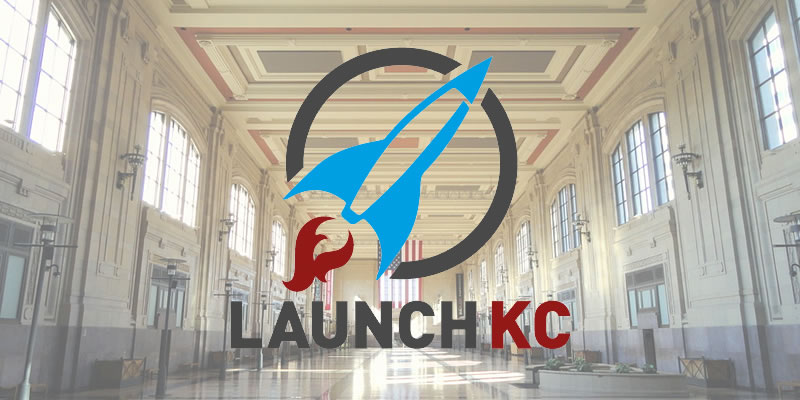 KANSAS CITY BUSINESS JOURNAL – Aug 23, 2016
KANSAS CITY BUSINESS JOURNAL – Aug 23, 2016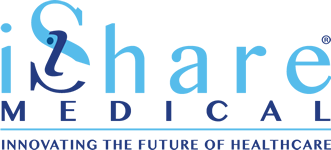
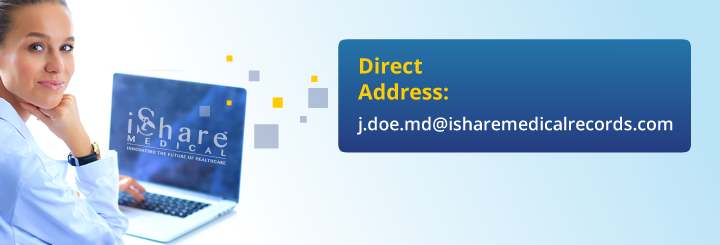


 Linda Van Horn, MBA, and Founder/CEO of iShare Medical℠ was recently quoted in the “On Health Care” section of the Kansas City Business Journal June 10, 2016 issue. iShare Medical℠ was also the subject of a Kansas City Business Journal June 7, 2016 article:
Linda Van Horn, MBA, and Founder/CEO of iShare Medical℠ was recently quoted in the “On Health Care” section of the Kansas City Business Journal June 10, 2016 issue. iShare Medical℠ was also the subject of a Kansas City Business Journal June 7, 2016 article: 
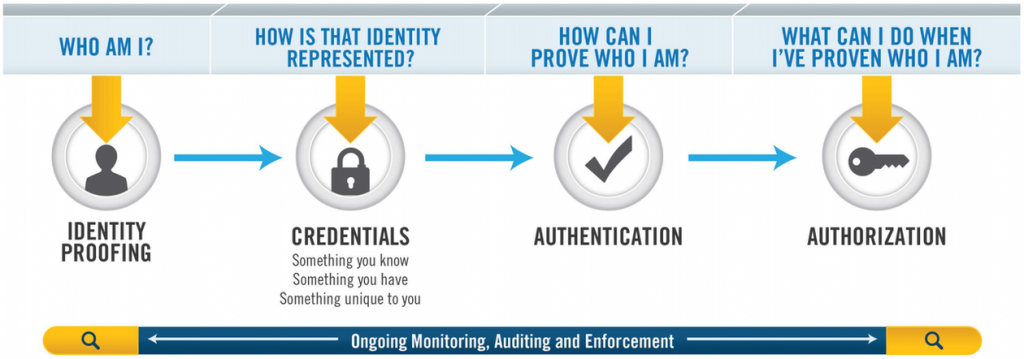
 Deloitte alumnae Linda Van Horn, MBA, and Founder/CEO of iShare Medical℠ was the featured speaker at the fourth annual Kansas City WIN Alumni Luncheon on Friday, May 13. Linda is an extraordinary businesswoman who is considered an authority in health information exchange, interoperability, and a thought leader in innovating the future of healthcare. iShare Medical℠ is a shared interoperable electronic medical record system that provides interoperability solutions to healthcare. Ms. Van Horn pioneered the concept and created software tools for a cradle-to-grave lifetime health record stored based on the patient. iShare Medical’s HIPAA-Compliant nationwide network spans over 58,000 healthcare organizations and 1.2 million Direct Addresses for health information exchange.
Deloitte alumnae Linda Van Horn, MBA, and Founder/CEO of iShare Medical℠ was the featured speaker at the fourth annual Kansas City WIN Alumni Luncheon on Friday, May 13. Linda is an extraordinary businesswoman who is considered an authority in health information exchange, interoperability, and a thought leader in innovating the future of healthcare. iShare Medical℠ is a shared interoperable electronic medical record system that provides interoperability solutions to healthcare. Ms. Van Horn pioneered the concept and created software tools for a cradle-to-grave lifetime health record stored based on the patient. iShare Medical’s HIPAA-Compliant nationwide network spans over 58,000 healthcare organizations and 1.2 million Direct Addresses for health information exchange. On February 25, 2016, the DirectTrust and Federal Health Architecture announced that they have entered into an historic agreement creating a Government Trust Anchor Bundle to facilitate secure, interoperable healthcare data exchange among government agencies and between government agencies and private healthcare industry providers.
On February 25, 2016, the DirectTrust and Federal Health Architecture announced that they have entered into an historic agreement creating a Government Trust Anchor Bundle to facilitate secure, interoperable healthcare data exchange among government agencies and between government agencies and private healthcare industry providers. Wouldn’t it be nice to have all the prescriptions from all the patient’s providers together in one place? What about having all of the patient’s past medical history include x-rays and MRI’s available at a click of a button? How about being able to review the referring provider’s office visit notes before seeing a new patient? Want to know if the patient has had PT? Click a button. Sound like a dream? It’s not. It is all possible today through healthcare interoperability.
Wouldn’t it be nice to have all the prescriptions from all the patient’s providers together in one place? What about having all of the patient’s past medical history include x-rays and MRI’s available at a click of a button? How about being able to review the referring provider’s office visit notes before seeing a new patient? Want to know if the patient has had PT? Click a button. Sound like a dream? It’s not. It is all possible today through healthcare interoperability.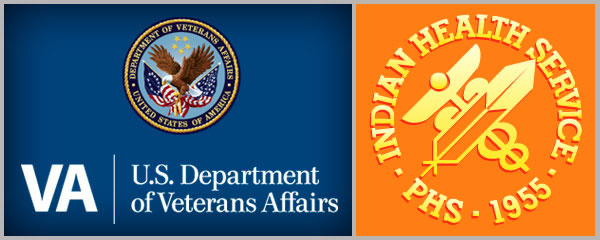 The Department of Veterans Affairs (VA) and the Indian Health Service (IHS) have become the first federal agencies to become Electronic Healthcare Network Accreditation Commission (EHNAC) Accredited DirectTrust Health Information Services Providers (HISPs). This accreditation enables the VA and IHS to exchange messages directly and securely with other EHNAC Accredited DirectTrust HISPs in what is known as the DirectTrust Accredited Trust Bundle.
The Department of Veterans Affairs (VA) and the Indian Health Service (IHS) have become the first federal agencies to become Electronic Healthcare Network Accreditation Commission (EHNAC) Accredited DirectTrust Health Information Services Providers (HISPs). This accreditation enables the VA and IHS to exchange messages directly and securely with other EHNAC Accredited DirectTrust HISPs in what is known as the DirectTrust Accredited Trust Bundle.